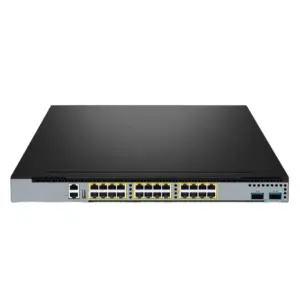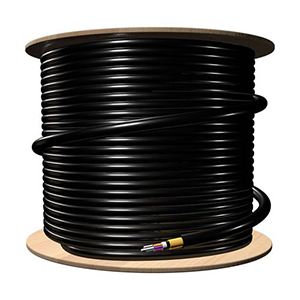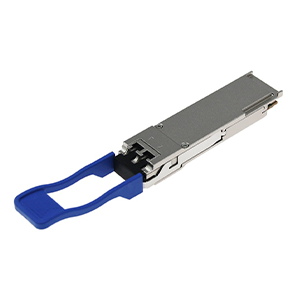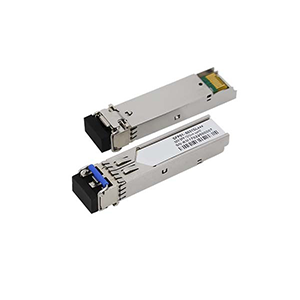CAT8 cables undoubtedly play an important role in high-speed networks. This article will explore the most suitable AWG standards for CAT8 cables. We will first define the AWG (American Wire Gauge) standard and its meaning, and explain the relationship between AWG and cable size and conductor cross-sectional area. Next, we will explain the AWG range required for CAT8 cables and analyze the impact of different AWG sizes on their performance.
We will list the common CAT8 cable AWG selections and compare the differences in cost, flexibility, and other aspects of different AWG sizes. In addition, we will explain how AWG selection affects the applicability of CAT8 cables in actual deployments and analyze the considerations for selecting the best AWG standard in different application scenarios. Finally, we will describe the correct installation methods for CAT8 cables of different AWG sizes and provide daily inspection and maintenance recommendations based on AWG characteristics.
Basic understanding of AWG standards
Let me give you a detailed introduction to the basic knowledge of AWG (American Wire Gauge) standards.
Definition and meaning of AWG standard:
AWG is a standard size unit used to describe the diameter of wire/cable conductors. It was first developed by American engineer William Sturgeon in the mid-19th century and has been widely used in the wire and cable industry. The main features of the AWG standard are as follows:
(1) The smaller the value, the larger the conductor diameter.
(2) There are 41 size grades from AWG 1 to AWG 40.
(3) The difference in conductor diameter between adjacent AWG numbers is about 12.5%.
(4) AWG 1 corresponds to the maximum conductor diameter and AWG 40 corresponds to the minimum conductor diameter.
Through the AWG standard, manufacturers and users can quickly and accurately describe and select appropriate wire and cable specifications to meet different application requirements.
Relationship between AWG and cable size and conductor cross-sectional area:
(1) Conductor diameter:
- The smaller the AWG number, the larger the conductor diameter.
- For example, the conductor diameter of AWG 12 is about 2.053mm, and the conductor diameter of AWG 22 is about 0.643mm.
(2) Conductor cross-sectional area:
- The conductor cross-sectional area is proportional to the square of the conductor diameter.
- The cross-sectional area difference between each adjacent AWG number is about 25%.
- For example, the conductor cross-sectional area of ??AWG 12 is about 3.31 square millimeters, and the conductor cross-sectional area of ??AWG 22 is about 0.33 square millimeters.
(3) Cable size:
- In addition to the conductor diameter, the cable diameter is also related to factors such as the thickness of the insulation layer.
- But in general, the smaller the AWG number, the larger the cable size.
In short, the AWG standard is a size specification widely used in the wire and cable industry. The AWG number can quickly understand the conductor diameter and cross-sectional area information, so as to select the appropriate cable product. This is very important for applications in the power, electronic and electrical fields.
Analysis of AWG characteristics of CAT8 cable
Let me analyze the AWG size range required for CAT8 Ethernet cable and the impact of different AWG sizes on the performance of CAT8 cable.
AWG range required for CAT8 cable:
According to the technical requirements of the CAT8 standard:
(1) Conductor size:
- The conductor diameter of CAT8 cable should be between 16AWG (1.3mm) and 22AWG (0.64mm).
(2) Conductor cross-sectional area:
- The corresponding conductor cross-sectional area should be between 1.31 square millimeters and 0.33 square millimeters.
This AWG range can meet the technical requirements of CAT8 cables for bandwidth, impedance matching, signal integrity, etc. at Ethernet transmission rates up to 40Gbps.
The impact of different AWG sizes on CAT8 cable performance:
(1) Conductor diameter and cross-sectional area:
- The smaller the AWG number, the larger the conductor diameter and cross-sectional area.
- A larger cross-sectional area is conducive to reducing resistance and improving conductivity.
(2) Signal transmission quality:
- Conductors with larger cross-sectional areas can better maintain the required characteristic impedance and reduce signal reflection and distortion.
- It also helps to improve anti-interference ability and reduce parasitic inductance and capacitance.
(3) Mechanical strength:
- Larger AWG conductors have better mechanical strength and flexibility.
- It is helpful to improve the cable’s tensile and compressive resistance and reliability.
(4) Power consumption and heat dissipation:
- Smaller AWG conductors have higher resistance and will generate more power consumption and heat when carrying large currents.
- This requires the cable to have a good heat dissipation design to ensure safe and reliable operation.
In summary, under the premise of meeting the CAT8 technical requirements, appropriately selecting a larger AWG conductor size is conducive to improving the overall performance and reliability of the CAT8 cable. However, factors such as cost and weight should also be considered for trade-offs.
Choosing the Best CAT8 Cable AWG Standard
Let me analyze the common AWG size selection in CAT8 Ethernet cable in detail, as well as the differences in cost, flexibility, etc. of various AWG sizes.
Common CAT8 Cable AWG Selection:
(1) 22AWG (0.64mm):
- This is the typical AWG size of CAT8 cable.
- 22AWG takes into account the technical requirements of conductor cross-sectional area and mechanical strength.
(2) 24AWG (0.51mm):
- Compared with 22AWG, 24AWG conductor diameter and cross-sectional area are smaller.
- But it can still meet the performance index requirements of CAT8.
(3) 26AWG (0.40mm):
- 26AWG conductors are smaller in size and are used in some special application scenarios, such as ultra-compact internal wiring of equipment.
- However, the mechanical strength and heat dissipation performance are slightly reduced.
(4) Other AWG sizes:
- Within the range of 16AWG (1.3mm) to 22AWG (0.64mm), other intermediate AWG sizes can also be selected.
- However, 22AWG and 24AWG are usually the most common and recommended specifications in CAT8 cables.
Differences in various aspects of CAT8 cables of different AWG sizes:
(1) Cost:
- 22AWG conductors are usually slightly more expensive than 24AWG or 26AWG.
- But the overall cost difference is not large and is within an acceptable range.
(2) Flexibility:
- 24AWG and 26AWG cables are more flexible and easier to install and wire.
- 22AWG conductors are slightly thicker and less flexible.
(3) Mechanical strength:
- 22AWG cables have higher mechanical strength and are more resistant to stretching and compression.
- 24AWG and 26AWG are relatively weak and require more careful installation.
(4) Heat dissipation performance:
- 22AWG cable has a larger conductor cross-sectional area and better heat dissipation performance.
- 22AWG cable may have an advantage when carrying large currents.
Taking all the above factors into consideration, for standard CAT8 Ethernet application scenarios, 22AWG is usually a more ideal AWG size choice. However, if there are special requirements, such as wiring space limitations, 24AWG or 26AWG CAT8 cables can also be selected.
The impact of AWG selection on CAT8 cable applications
Let me analyze in detail the applicability and key considerations of AWG selection for CAT8 cables in actual deployment.
The impact of AWG selection on CAT8 cable applications:
(1) Transmission performance:
- Larger AWG conductors (such as 22AWG) have a larger cross-sectional area, which is conducive to maintaining the characteristic impedance and signal integrity required by CAT8.
- This can ensure better performance and reliability in 40Gbps high-speed Ethernet transmission.
(2) Mechanical strength:
- Larger AWG conductors have better mechanical strength and pressure resistance.
- It is conducive to the installation and use of cables in complex environments (such as inside cabinets, outdoor wiring, etc.).
(3) Heat dissipation characteristics:
- Larger AWG conductors have better heat dissipation performance and can better handle the heat generated by large currents.
- This is very important for applications that require long-term high-load operation.
(4) Flexibility:
- Conductors with smaller AWG numbers are more flexible, which is conducive to the wiring and storage of cables in narrow spaces.
- However, slightly poorer mechanical strength may affect the convenience of installation and use.
Considerations for selecting the best AWG standard in different application scenarios:
(1) Transmission distance and load:
- For long-distance, high-load applications, it is more appropriate to choose cables with larger AWG numbers (such as 22AWG).
- To ensure transmission performance and reliability.
(2) Installation environment conditions:
- If the cable needs to be routed in a narrow and complex environment, cables with smaller AWG numbers (such as 24AWG or 26AWG) will be more flexible.
- However, attention should be paid to mechanical strength and heat dissipation issues.
(3) Cost budget:
- The cost of cables with larger AWG numbers is slightly higher than that of cables with smaller AWG numbers, and budget constraints need to be weighed.
- However, the cost difference between different specifications of CAT8 cables is generally not significant.
(4) Future upgrade requirements:
- Consider whether the system bandwidth needs to be upgraded in the future. Choosing the appropriate AWG specification can leave room for future upgrades.
In summary, when choosing the AWG specification of CAT8 cable, it is necessary to weigh multiple factors such as actual application scenarios, technical requirements, and cost budget. Only by choosing the most appropriate AWG standard can the performance advantages of CAT8 cable be fully utilized.
Installation and maintenance of CAT8 cable AWG selection
Let me introduce you in detail the precautions for installation and maintenance of CAT8 cables of different AWG sizes.
Correct installation method of CAT8 cables of different AWG sizes:
(1) 22AWG CAT8 cable:
- Due to the thicker conductor, sufficient bending space needs to be left to avoid damage caused by excessive bending.
- Be careful when connecting to prevent damage to the conductor.
- Ensure that the port connection is firm to avoid poor contact.
(2) 24AWG CAT8 cable:
- Compared to 22AWG, 24AWG cable is more flexible and easier to bend and route in narrow spaces.
- However, care should be taken not to bend excessively to avoid affecting transmission performance.
- Be gentle when connecting ports and be careful not to squeeze the conductor.
(3) 26AWG CAT8 cable:
- 26AWG conductors are the smallest and most flexible, making them ideal for routing in complex environments.
- However, they are less mechanically strong, so be extra careful when connecting to avoid damaging the conductor.
- The cable needs to be properly fixed to prevent it from being squeezed or pulled by external forces.
Daily inspection and maintenance recommendations for CAT8 cables based on AWG characteristics:
(1) Regular inspections:
- Inspect the cable laying conditions to ensure that there are no signs of excessive bending, pulling or squeezing.
- Focus on checking whether the connectors are firmly connected and not loose or in poor contact.
(2) Environmental monitoring:
- Pay attention to the temperature, humidity and other conditions of the cable environment to ensure that they are within the specified range.range.
- Heating under high current load also needs to be paid special attention.
(3) Insulation performance inspection:
- Regularly check the insulation performance of the cable to ensure that the insulation layer is not damaged or aged.
- Appropriately clean the cable surface according to the actual situation to remove dust and other pollution.
(4) Performance test:
- Professional test instruments can be used to regularly test the transmission performance indicators of the cable, such as bandwidth, signal-to-noise ratio, etc.
- Possible performance degradation problems should be discovered and handled in a timely manner.
In short, no matter what AWG size CAT8 cable is used, it is necessary to be extremely careful and cautious during installation and daily maintenance, and follow relevant operating specifications to ensure that the cable can operate reliably for a long time.
Summary
Rationally selecting the AWG standard of CAT8 cable is crucial to building a high-performance network. Our company has long focused on the research and development and production of network equipment and its supporting products, and has rich industry experience. Our CAT8 series cable products have reached the industry-leading level in terms of conductor quality and shielding performance, and can meet your demanding needs for high-speed network construction.
Whether you need to deploy in a data center, corporate office, or industrial automation scenario, we can provide you with customized CAT8 cable solutions. At the same time, our professional team will provide you with a full range of technical support, including on-site surveys, product recommendations, installation guidance and maintenance suggestions. Contact us now to learn more about the CAT8 cable AWG standard.
Cat8 Ethernet Cable AWG FAQ
The recommended AWG for Cat8 Ethernet cables is typically 22 AWG or 24 AWG, which provides the optimal balance of cable thickness, flexibility, and performance.
The AWG size directly impacts the cable’s physical characteristics, such as diameter, weight, and flexibility, which can affect the overall cable performance and installation requirements.
Smaller AWG sizes (lower numbers) have lower resistance and can support higher bandwidth and longer transmission distances, but they also result in a thicker, less flexible cable.
22 AWG cables are slightly thicker and more robust but may be less flexible, while 24 AWG cables are thinner and more flexible but have a slightly lower performance potential.
The 22 AWG size may be preferred for longer cable runs or installations where cable management and physical robustness are more critical, while 24 AWG may be better suited for shorter, more flexible cable runs.
It is generally recommended to use the same AWG size throughout the network for consistency and to avoid potential performance issues.
Compared to older Ethernet cable standards like Cat5e and Cat6, the recommended AWG size for Cat8 is slightly smaller, reflecting the need for higher-performance cable construction.
Using an incorrect AWG size may result in decreased signal quality, higher attenuation, and potential compatibility issues with network equipment.
The IEEE 802.3bz standard for 2.5G and 5G Ethernet provides guidance on the appropriate AWG sizes for Cat8 cables, typically recommending 22 AWG or 24 AWG.
Factors to consider include the cable length, installation environment, network equipment requirements, and any specific recommendations from the cable manufacturer.





